1 Provenience. Notedabove. The 47 Proskuryakovapieces make up 0.5% of our 8813-piece grand total (Table A1.1, site 20).
2 Species. The only two groups in the Proskuryakova collection are hyena (51.1%) and saiga antelope (48.9%) (Table A1.2, site 20). Compared with the pooled assemblage averages, Proskuryakova exceeds in these two groups, and is missing all other groups.
3 Skeletal elements. The most common elements in the 47 Proskuryakova pieces are: vault (29.8%), antler-horn (25.5%) (Figs. 3.105-3.106), long bone (21.3%), humerus (8.5%), and radius (8.5%) (Table A1.3, site 20). Compared with the pooled assemblage averages, Proskuryakova has more pieces of vault, antler-horn, humerus, and radius; and fewer pieces of vertebra, rib, foot, metapodial, toe, scapula, femur, and unknown.
4 Age. Only 4.3% of the 47 Proskuryakova pieces are sub-adult (Table A1.4, site 20). Compared with the pooled assemblage average, Proskuryakova has a smaller representation of sub-adults.
5 Completeness. There are no whole pieces in the Proskuryakova assemblage, 55.3% have only one anatomical end, and 44.7% have no anatomical ends (Table A1.5, site 20). Compared with the pooled assemblage, Proskuryakova has a slightly higher frequency of possible ends (27.7%; 26 ends out of 94 possible) than does the pooled assemblage (20.4%; 3231 ends out of 15 798 possible), indicating slightly more completeness as assessed by this variable of “endedness.”
6 Maximum size. The Proskuryakova mean is 11.9cm, and the range is 7.1cm to 18.8 cm (Table A1.6, site 20). The mean is slightly larger than that of the pooled assemblage, but the range is less. Looking at the whole long bone lengths of hyena and saiga provided by Vera Gromova (1950: table 27) shows that the Proskuryakova upper range limit is generally less than the lower range limit for hyena, but fits well with her values for saiga antelope.
7 Damage shape. This variable was not scored in 1999 for Proskuryakova.
8 Color. All 47 Proskuryakova pieces are ivory colored (Table A1.8, site 20). The pooled assemblage average is less (89.2%) because there are other colors present in the pooled group.
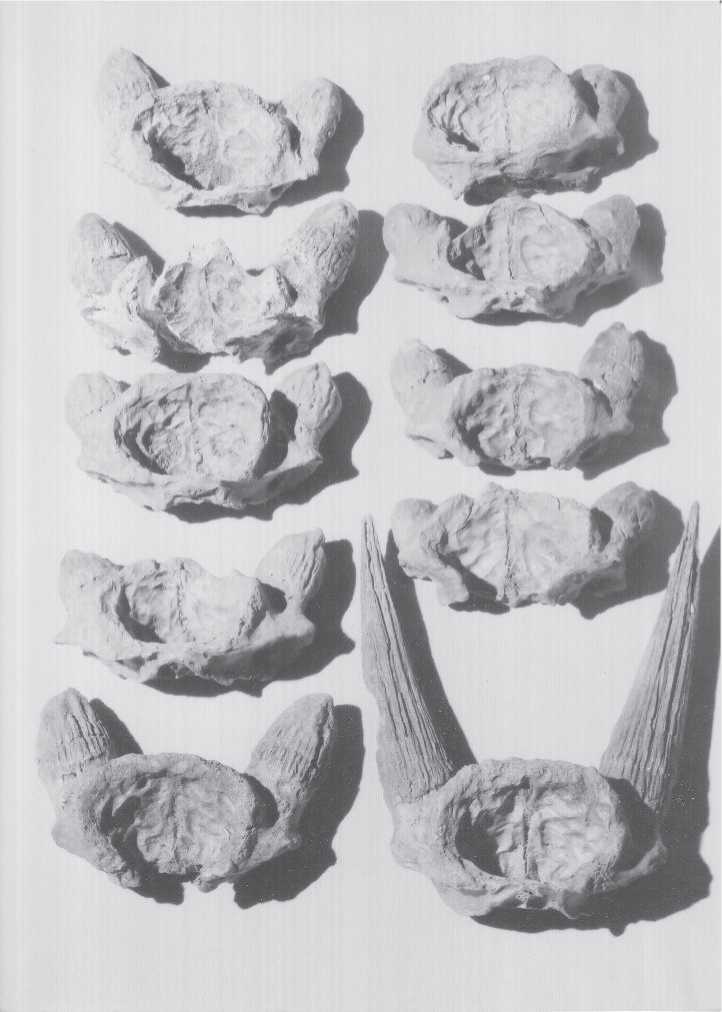
Fig. 3.105 Proskuryakova Cave, saiga antelope. Patterned carnivore damage to crania recovered in 1974. It was these specimens that when first seen in 1984 triggered the senior author’s desire to learn more about how carnivores damaged bone. Maximum diameter of specimen in lower right is 15.0 cm (CGT neg. IAE 8-10-99:15).
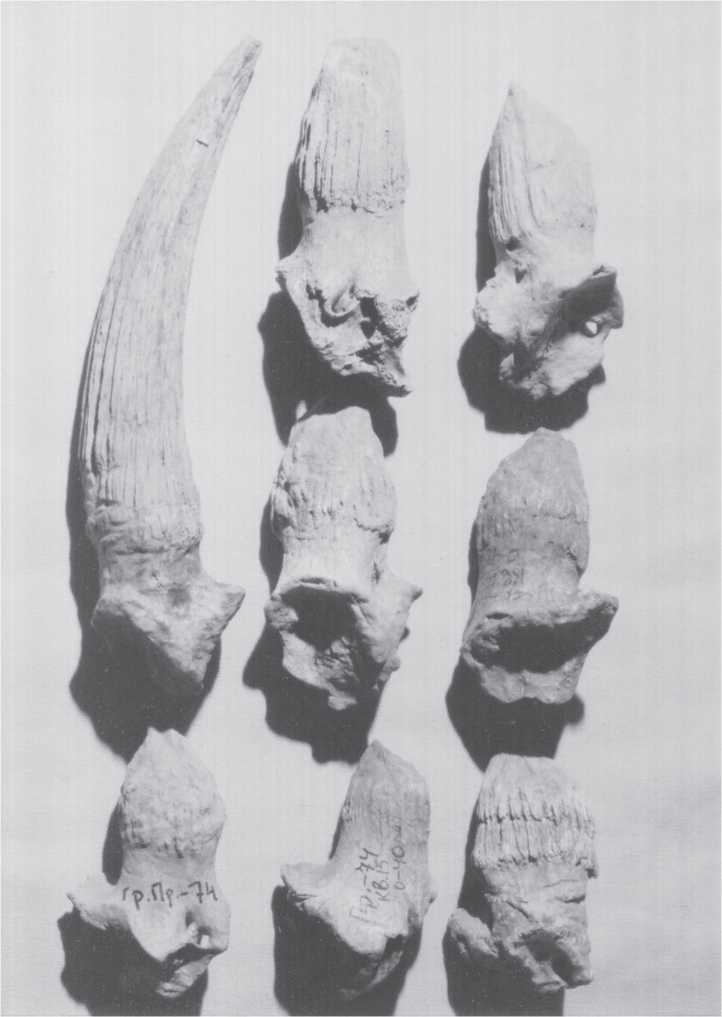
Fig. 3.106 Proskuryakova Cave, saiga antelope. Horn core stumps. The cranial vaults and most of bom cores have been chewed off. Whole born core in the upper left is 15.0 cm in length (CGT neg. lAE 8-10-99:12).
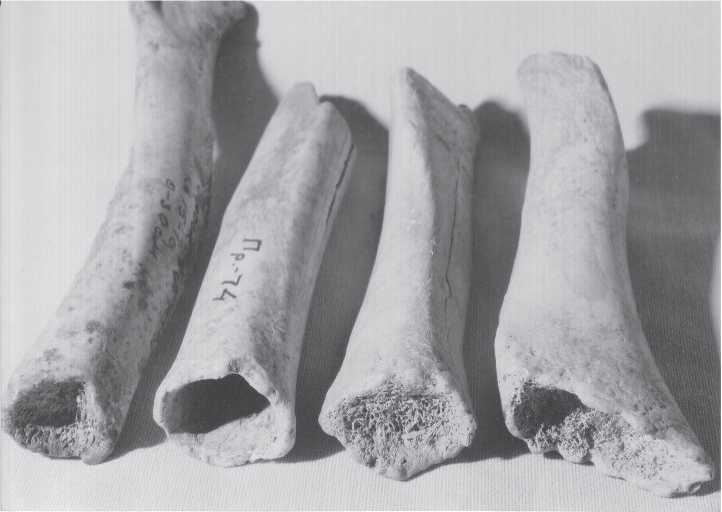
Fig. 3.107 Proskuryakova Cave, end-hollowing. These and most other bone refuse in this cave have
One or several elements of the carnivore signature. Cross-sectional diameter of left specimen is 2.3 cm (CGT neg. IAE 8-10-99:20).
9 Preservation. There are four (8.5%) chalky specimens among the 47 Proskuryakova pieces (Table A1.9, site 20). This frequency is about half that of the pooled assemblage average.
10 Perimortem breakage. All of the 47 Proskuryakova pieces have perimortem breakage (Table A1.10, site 20). This frequency is greater than the pooled assemblage average.
11 Postmortem breakage. Six (12.8%) of the 47 Proskuryakova pieces have postmortem breakage (Table A1.11, site 20). This value is somewhat less that the pooled assemblage average.
12 End-hollowing (Fig. 3.107). This indicator of carnivore activity is common (29.8%) in the 47 Proskuryakova pieces (Table A1.12, site 20). End-hollowing is three times more frequent in Proskuryakova than in the pooled assemblage.
13 Notching (Fig. 3.108). Another carnivore indicator, notching is very frequent in Proskuryakova (40/47 pieces; 85.1%) (Table A1.13, site 20). The number of notches ranges fTom one to more than seven, with three and four notches tied for the most fTequent per piece (19.1% each). Compared with the pooled assemblage average, Proskuryakova has five times more notching.
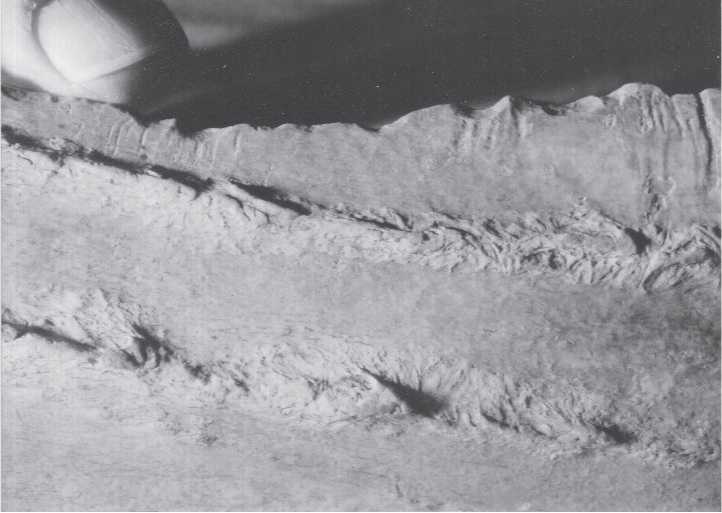
Fig. 3.108 Proskuryakova Cave, notching. Rhinoceros tibia with human-like notching along edge of
Fracture. However, closely associated tooth scratches indicate that the notching was most likely caused by carnivore chewing (CGT neg. IAE 8-11-99:16).
14 Tooth scratches. Tooth scratches are nearly universal (97.9%) in the 47-piece Proskuryakova collection (Table A1.14, site 20). The number of scratches per piece ranges from one to more than seven. The vast majority (80.8%) has more than seven scratches per piece. Scratches are almost five times less common for the pooled assemblage average.
15 Tooth dints. Almost as frequent as scratching, tooth dints are very common (93.6%) in the 47 Proskuryakova pieces (Table A1.15, site 20). The number of dints per piece ranges fTom one to more than seven, with the latter being the most fTequent (55.3%), as was the case with scratches. Dinted pieces are three times less common for the pooled assemblage average.
16 Pseudo-cuts. Four pseudo-cuts (8.5%) occur in the Proskuryakova collection. The number of pseudo-cuts per piece ranges from one to four (Table A1.16, site 20). This frequency is almost two times greater than the pooled assemblage average (4.8%). Thus, all of the carnivore indicators up to now occur in relatively or absolutely high frequencies, as would be predicted on the basis of the Razboinich’ya hyena cave baseline collection.
17 Abrasions. Three pieces with abrasions (6.4%) are present in the 47-piece Proskuryakova assemblage. The number of abrasion striations per piece ranges from one to three, much lower than is characteristic of abrasion sets made by hammer stone and anvil slippage (Table A1.17, site 20). While abraded pieces are uncommon in the Proskuryakova assemblage, they are even less common in the pooled assemblage.
18 Polishing. Polishing is almost universal in the 47 Proskuryakova pieces (97.9%). It occurs on the end (6.4%) and end-middle (91.4%) (Table A1.18, site 20). Polishing is considerably more frequent in Proskuryakova than in the pooled assemblage.
19 Embedded fragments. A total of 6.4% of the 47 Proskuryakova pieces have 1-3 embedded fragments (Table A1.19, site 20). This is a little more than the pooled assemblage average, and a little less than the frequency in Razboinich’ya (8.8%).
20 Tooth wear. Proskuryakova has only one tooth to use for wear assessment. It belonged to a young animal (Table A1.20, site 20).
21 Acid erosion. It is not completely surprising that there are no examples of acid erosion in the Proskuryakova assemblage, despite the presence of hyena bones and the severe perimortem bone damage caused by these carnivores (Table A1.21, site 20). This is because acid-eroded pieces are generally smaller than the smallest pieces in this assemblage, whose incomplete content represents selection and curation primarily for species identification.
There
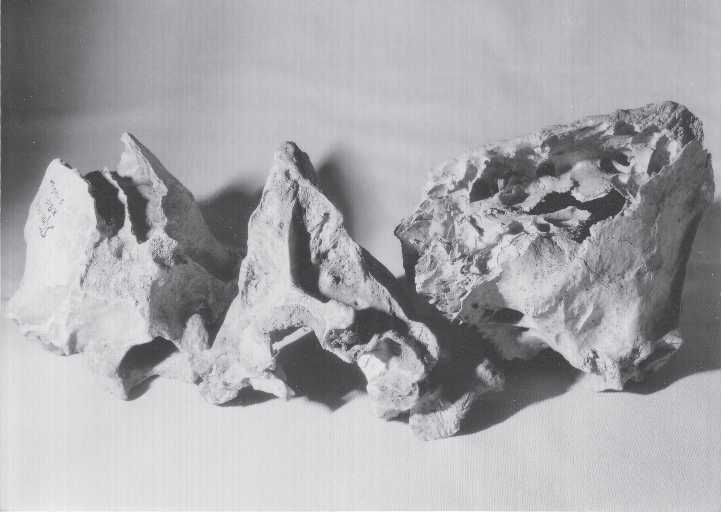
Fig. 3.109 Proskuryakova Cave hyenas. The actual presence of hyena bones as shown with these three cranial vault pieces suggests that most of the carnivore damage was done by these creatures. The left and middle specimens show the foramen magnum, the right specimen shows a crestless vault from the left. Middle specimen is 13.4cm maximum width (CGT neg. IAE 8-10-99:8).
22-26 Rodent gnawing, insect damage, human bone, cut marks, and chop marks.
Are no examples of these variables in the 47-piece Proskuryakova assemblage.




 World History
World History









